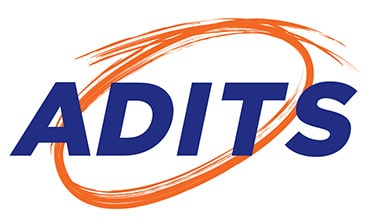- A
- Artificial Intelligence (AI): Artificial intelligence, also known as AI, is a technology that allows computers and machines to mimic human intelligence and problem-solving capabilities.
- API (Application Programming Interface): An API, known as an Application Programming Interface, is a set of rules or protocols enabling communication between software applications to share data, features, and functionalities.
- B
Backend: The “backend” refers to the unseen part of a website or software program that users are not exposed to.
Bug: A software bug is an issue that leads to a program crashing or generating incorrect output due to inadequate or erroneous logic. A bug can be an error, mistake, defect, or fault, resulting in failure or deviation from expected outcomes.
Big Data: Big data refers to large datasets that are too complex and voluminous for traditional processing tools. The term also encompasses the variety, velocity and veracity of the data. This is also known as the three “Vs.”
- Volume
- Velocity
- Variety
Business Email Compromise (BEC): Business Email Compromise (BEC) entails targeted phishing, or spear phishing, where criminals focus on organisations to defraud them of money or goods. They also target at employees, seeking to deceive them into disclosing important business information.
- C
Cloud Computing: Cloud computing involves allowing users to access and store data and apps over the internet instead of on a physical computer or server.
Compliance: Compliance is the state of being in accordance with established laws, regulations or standards, or the process of becoming so.
Cyber attack: A Cyber Attack is a purposeful action conducted in cyberspace aimed at altering, disrupting, obstructing, diminishing, or dismantling computers or networks, along with the data stored on them. Such actions can significantly undermine national security, stability, or economic well-being.
Cloud Migration: Cloud Migration is the process of transferring data, applications, and workloads from an on-premises data centre to a cloud-based infrastructure, or from one cloud environment to another.
Cybersecurity: Cybersecurity involves safeguarding networks, devices, and data against unauthorised access or criminal use, ensuring the confidentiality, integrity, and availability of information.
Cyber Security training: Cyber Security Training aims to educate employees and leaders about the current threats and best practices to follow in order to minimise the risk to their organisation. Cyber security training is often done through a platform including videos and quizzes. It is optimal when done on an ongoing basis. Overall it requires a really small time investment from the employees and the organisations but it can go a long way!
- D
Dark web: The dark web refers to encrypted online content that enables individuals to conceal their identity and location. This content remains unindexed by conventional search engines. Accessing the dark web requires users to install a private browser such as the TOR Browser, utilise a Virtual Private Network (VPN), and maintain the security of their computer.
Data Analytics: Data analytics utilises data, techniques, and tools to recognise patterns and trends, generating actionable insights that aid informed decision-making.
Data breach: A data breach occurs when information is illicitly obtained or extracted from a system without the consent or awareness of the system’s owner. Stolen data may comprise sensitive, proprietary, or confidential information, including credit card numbers, customer data, trade secrets, or matters related to national security.
Database: A database is a structured collection of organised information or data, usually stored electronically within a computer system.
Data Backup and Recovery: Data Backup and Recovery is the process of generating and storing copies of data as a safeguard for organisations against data loss. Restoring data from a backup usually entails restoring it to the original location or an alternate location where it can substitute for the lost or corrupted data.
Denial-of-Service Attack: A Denial-Of-Service (DoS) attack is where a malicious actor aims to render a computer or another device, making it inaccessible to its intended users by disrupting its regular operations. Typically, DoS attacks involve inundating a targeted machine with requests until it becomes overwhelmed, incapable of processing normal traffic.
- E
Encryption: Encryption is a way of crawling data in a manner that allows only authorised parties to understand the information.
Essential 8: The Essential Eight is a set of 8 mitigation strategies recommended by the Australian Cyber Security Centre (ACSC). These controls were crafted to enhance Australian businesses’ cyber security. They comprise of: application control, patch applications, Microsoft Office Micro, user application hardening, administrative privileges, patch operating systems, MFA, and daily backups.
Endpoint Security: Endpoint security involves safeguarding endpoints like desktops, laptops, and mobile devices against malicious activities.
- F
Firewall: A firewall is a computer network security system that regulates internet traffic entering, exiting, or moving within a private network.
Frontend: The frontend of a software program or website is all elements that users interact with.
Firewall Management: Firewall Management is the process of configuring, monitoring, and upkeeping a firewall to guarantee its proper operation and delivery of effective security for an organisation’s network. This includes establishing the firewall with suitable rules to permit or deny traffic from designated sources or destinations.
- G
- GDPR: The General Data Protection Regulation (GDPR) is a legislation that updated and unified data privacy laws across the European Union (EU). It impacts every organisation handling European’s personal information across the World.
- I
Identity and Access Management (IAM): Identity and Access Management (IAM) guarantees that individuals and job roles within your organisation have appropriate access to the necessary tools for their roles. IAM systems allow your organisation to administer employee applications without requiring individual logins for each app as an administrator. These systems also empower your organisation to oversee various identities, including individuals, software, and hardware such as robotics and IoT devices.
Internet of Things (IoT): The Internet of Things (IoT) is a network of physical objects, such as smart appliances or fitness trackers, embedded with sensors, software, and other technologies. These objects connect and exchange data with other devices and systems via the internet.
Intrusion Prevention System (IPS): An Intrusion Prevention System (IPS) monitors network traffic, identifying potential threats and blocks them by taking automatic actions such as alerting the security team, terminating hazardous connections, eliminating malicious content, or activating other security devices.
IT Infrastructure Management: IT Infrastructure Management is the ongoing maintenance of an organisation’s IT infrastructure, ensuring the smooth operation of hardware, data storage, operating systems, networks, enterprise software, and internet platforms.
Insider threats: Insider Threat refers to the risk posed by an insider using their authorised access or knowledge of an organisation to cause harm. This harm can manifest through malicious, complacent, or unintentional actions, compromising the integrity, confidentiality, and availability of the organisation, its data, personnel, or facilities.
Intrusion Detection System (IDS): An intrusion detection system (IDS) is a network security tool designed to monitor network traffic and devices for recognised malicious activity, suspicious behaviour, or violations of security policies.
IT Consulting: IT Consulting offers advice to clients, helping them in evaluating various technology strategies and aligning them with their business or process goals. This assistance includes strategic, architectural, operational, and implementation planning to support customers’ IT initiatives.
IT Security Assessment: A security assessment involves evaluating an organisation’s IT systems, applications, and policies to identify vulnerabilities and potential risks that may compromise security.
- M
Machine Learning: Machine learning (ML) is a field within artificial intelligence (AI) that concentrates on leveraging data and algorithms to enable computers to mimic human learning processes, gradually improving their precision.
Managed IT Services: Managed IT Services entail continuous support delivered by an IT service provider for a set monthly charge. This includes proactive monitoring, maintenance, priority support, and user and device management to ensure optimal performance of IT systems.
Malware: Malware, or “malicious software,” includes harmful programs or code designed to invade, damage, or disable systems. It seeks to disrupt normal operations, disrupting normal functions.
Microsoft 365: Microsoft 365 is a cloud-powered productivity platform with Office apps, cloud services, and security.
- N
Network: A network consists of two or more computers that share resources, such as exchanging files or enabling electronic communications.
NIST: The National Institute of Standards and Technology (NIST) creates cybersecurity standards, guidelines, best practices, and additional resources to cater to the requirements of U.S. industry, federal agencies, and the wider public. NIST was at the origin of a few other common standards.
Network Administration: Network Administration involves managing, monitoring, maintaining, securing, and servicing an organisation’s network. The exact responsibilities and procedures can vary based on the organisation’s size and type.
- P
Penetration Testing (Pen Testing): Penetration Testing, also known as Pen Test, is a security procedure in which a cyber-security professional attempts to find and exploit vulnerabilities within a computer system. The objective of this simulated attack is to pinpoint any weaknesses in a system’s defences that could be exploited by malicious actors.
Privacy Act and Reasonable steps: The Privacy Act 1988 was introduced to promote and protect the privacy of individuals and to regulate how Australian organisations handle personal information. An APP entity must take reasonable steps to protect personal information it holds from misuse, interference, and loss, as well as unauthorised access, modification, or disclosure.
Phishing: Phishing is a method used to obtain sensitive information, such as bank account numbers, through deceptive emails or fake websites, where the perpetrator pretends to be a legitimate business or trustworthy individual.
- Q
- Quishing: Quishing represents a phishing attack variant employing QR codes rather than text-based links in emails, digital platforms, or physical items. It’s a social engineering tactic utilised by scammers and cybercriminals to deceive individuals into disclosing personal information or downloading malware onto their devices.
- R
Ransomware: Ransomware, a common and dangerous form of malware, operates by locking or encrypting your files, rendering them inaccessible. To regain access, a ransom, typically in cryptocurrency, is demanded. Cybercriminals may also extort a ransom to prevent the leakage or sale of data and intellectual property online.
Remote IT Support: Remote IT support allows IT professionals to resolve computer systems and software issues without the need for physical presence on site. This service is commonly accessible through various communication channels like phone, email, chat, and dedicated remote desktop software.
- S
Security Information and Event Management (SIEM): Security Information and Event Management (SIEM) is a security solution that aids organisations in identifying and mitigating potential security threats and vulnerabilities proactively, preventing disruptions to business operations.
Server: A server refers to a computer or system delivering resources, data, services, or programs to other computers, called “clients”, across a network.
Smishing: Smishing is a cyber-attack aimed at individuals via SMS (Short Message Service) or text messages. During a smishing attack, cybercriminals dispatch deceptive text messages to entice victims into divulging personal or financial information, clicking on malicious links, or downloading harmful software or applications.
Spear Phishing: Spear phishing is a targeted phishing approach directed at specific individuals or groups within an organisation. It is a powerful variant of phishing, a malicious strategy utilising emails, social media, instant messaging, and other channels to coax users into revealing personal information or undertaking actions leading to network compromise, data loss, or financial harm. Unlike phishing’s broad approach, spear phishing involves prior research and focuses on specific targets.
Security Operations Centre (SOC): A Security Operations Centre (SOC) enhances an organisation’s capabilities in detecting, responding to, and preventing threats by integrating and coordinating all cybersecurity technologies and operations.
SMB1001: SMB1001 is a multi-tiered cyber security certification standard for small and medium-sized businesses. It was designed to be more inclusive, less technical and overall more achievable than other standards that require a greater monetary investment.
Social Engineering: Social engineering involves manipulating human error to acquire private information, access, or valuables. In cybercrime, these “human hacking” schemes often entice unwitting users to divulge data, propagate malware infections, or grant access to restricted systems. Such attacks can occur through online channels, in-person encounters, and other forms of interaction.
- V
Virtualization: Virtualization is the process enabling more efficient utilisation of physical computer hardware and forms the foundation of cloud computing.
VoIP (Voice over Internet Protocol): Voice over Internet Protocol (VoIP) is a technology that enables voice calls through a broadband Internet connection rather than a traditional analogue phone line.
Vulnerability Management: Vulnerability Management involves ongoing identification, prioritisation, and resolution of security vulnerabilities within an organisation’s IT infrastructure and software.
Vishing: Vishers employ deceitful phone numbers, voice-altering software, text messages, and social engineering techniques to deceive users into disclosing sensitive information. Vishing primarily relies on voice communication to carry out the deception.
VPN (Virtual Private Network): A Virtual Private Network (VPN) is a secure, encrypted connection over the Internet from a device to a network. The encryption ensures the safe transmission of sensitive data, preventing unauthorised individuals from intercepting the traffic, and enables the user to conduct remote work.
- W
- Whaling: A whaling attack involves cybercriminals posing as high-ranking members of an organisation to directly target senior or other significant individuals within the organisation. The objective is to steal money, sensitive information, or gain unauthorised access to their computer systems for illicit purposes. Whaling is similar to phishing in that it uses methods such as email and website spoofing to trick a target into performing specific actions, such as revealing sensitive data or transferring money.
- Z
- Zero-Day Exploit: A Zero-Day Exploit is a type of cyberattack that exploits a previously unknown or unaddressed vulnerability in computer software, hardware, or firmware.


